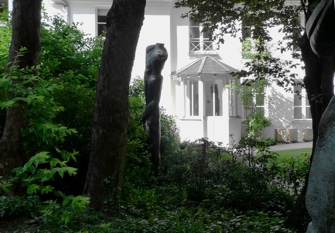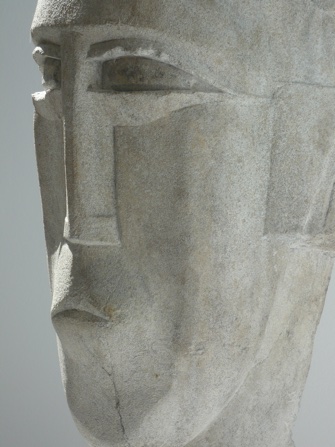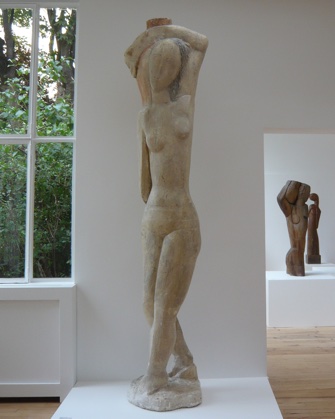
The work of Russian-born artist Ossip Zadkine (1888-1967) displays an unusually diverse range of influences: brutal Russian modernism, dramatic Cubist angularity, African tribal art and classical Greek sculpture.
After emigrating to France in 1910, Zadkine spent the years of World War I in France, volunteering for the French Foreign Legion and working as a stretcher-bearer. The victim of a gas attack, he became involved in the war effort and lived through some of the darkest moments of these violent years. These experiences left indelible marks on both the man and his art.
The Musée Zadkine in Paris, created by the artist’s widow, is located in his former studio, where he and his wife lived and worked from 1928 to his death. Along with the Musée Bourdelle, it is one of the rare examples of a preserved sculptor’s studio in Montparnasse, which became the Parisian haven for creative geniuses and penniless artists during the 1920s and ’30s. The space is arranged to evoke Zadkine’s working atmosphere as closely as possible.
This autumn, the museum is showcasing, along with its permanent collection of his sculptures, a new interactive presentation of the artist’s drawings and sculptures employing 21st-century technology and modern graphic design. Visitors are given iPads containing a wealth of vintage photographs of the sculptor and his works to help them delve deeper into the details and meaning of the art.
The exhibits are laid out along a winding route, leading from one room to another then into the garden. All the while, the museum’s rich photographic collection, available on the iPad, takes visitors back in time to the world of the workshop in Zadkine’s day. Viewing images of the sculptures, both in their completed state and at various stages in the creative process, strips the art to its barest bones, revealing the complexities and talent that went into each piece.
The use of the garden space and the light that floods through the glass roofs of the studio lend the museum an idyllic atmosphere far from the banalities of everyday life. It’s hard to believe the bustling Parisian streets lie mere meters away.
The openness of the space also lets nature play a role, while the changing seasons and movement of light ensure that each glance offers an original view of the exhibits.
The style of the works is incredibly varied. Much of the art exhibits a primitive quality; heads evoking the style of African tribal masks

and jagged natural features giving the impression of shapes ripped right from the rocks themselves.
The female form of the 1923 “Porteuse d’Eau” statue in walnut is reminiscent of the wooden carvings of totem poles in tribal societies. Her pose, as she raises a water jug above her head, so familiar in art history, and her primordial nakedness impart a raw, ancient quality to the piece.
Others refer to classical mythology or biblical stories and display an elegant voluptuousness. The curvaceous female form of “Rébecca, ou la

Grande Porteuse d’Eau” (1927) dominates the second room. The colossal size of the female figure, almost 3 meters high, set against the panoramic window behind, immediately draws the eye, while her statuesque curves render her the epitome of classical femininity.
Another piece, the bronze “Statue pour un Jardin” (1943-44), parodies classical sculpture. Classical motifs of music and architecture are evoked by the violin and the traditional column, while a familiar reclining pose is also borrowed from ancient statues. However, the fact that the column’s head is splintered from its base, the abstract, faceless quality of the human figure, and the only half-formed shape of the violin, which seems to melt into the human body, distort this classical ideal and add intriguing undertones to the piece.
More modernist pieces also play an allegorical role. Zadkine’s “Torse de la Ville Détruite” (1951-63) bears the unmistakable scars of the artist’s experiences of war. The hopeless human form, raising its arms desperately in the air, embodies the artist’s shock upon seeing the city of Rotterdam razed to the ground by German bombing. The torso, with a gaping chasm at its center, a heart symbolically cleaved out, condemns the inhuman barbarity of the action. The statue is a replica of the monument Zadkine created to commemorate the victims of the bombing, which now stands in the center of Rotterdam.
Favorite
